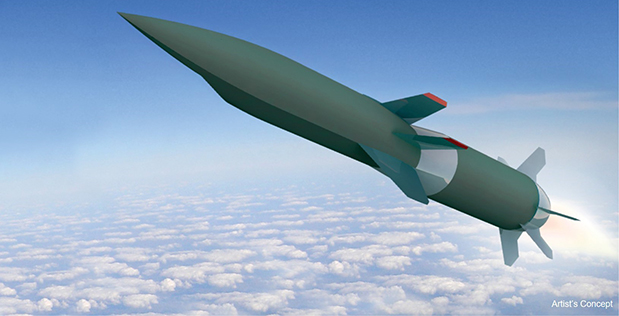
The joint work of the Defense Advanced Research Projects Agency (DARPA), Air Force Research Lab (AFRL), Lockheed Martin, and Aerojet Rocketdyne yielded a successful second flight test for the Hypersonic Air-breathing Weapon Concept (HAWC) this week.
HAWC is a cruise missile that uses its own kinetic energy to destroy targets on impact without needing an explosive warhead. Launched from a B-52 bomber, it could accelerate to speeds beyond Mach 5 – more than 3,700 mph – ultimately traveling more than 300 nautical miles and cruising to altitudes above 60,000 feet.
“Affordability and reliability are essential as we work to develop operational hypersonic solutions,” John Clark, vice president and general manager of Lockheed Martin Skunk Works, said. “Both of our HAWC flight tests launched from an operational aircraft and matched performance models and predictions to aid affordable, rapid development of future hypersonic weapons.”
The latest test doubled the amount of scramjet-powered vehicle data researchers had at their disposal, although even going in, the Air Force had already announced that it would not move forward with HAWC. Instead, the test was meant to enhance future capabilities and inform other hypersonic weapons – a technology all involved fully intend to pursue further.
The Air Force announced that it would pursue two other hypersonic weapons, the AGM-183 Air-Launched Rapid Response Weapon (ARRW), developed by Lockheed Martin, and the Hypersonic Attack Cruise Missile (HACM), to be developed under contract by Raytheon.
Lockheed Martin Skunk Works teamed with Aerojet Rocketdyne to advance low-cost advanced manufacturing technologies for HAWC, focusing on durability to achieve them. Their efforts allowed them to conclude that hypersonic systems could be produced affordably at rates required to meet national demands.




